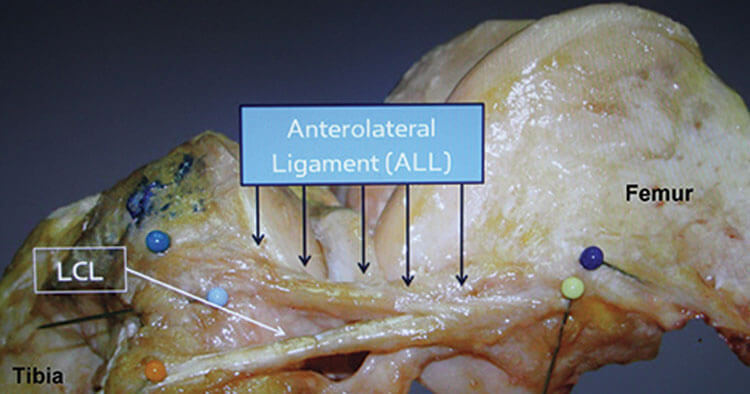Injury Rehabilitation and Training, Sports Injuries and Management, Surgical Procedures and Protocols
Could Extra-Articular Tenodesis Be The Future Of ACL Reconstruction Surgery?
Extra-Articular Tenodesis, What Is It?
Across the board, regardless of the area of medicine surgical techniques are continually evolving and improving, as part of the ongoing quest within the industry as it strives for medical improvements. ACL reconstruction surgery is no exception to this rule, and orthopaedic surgeons are continually looking for ways to both improve the surgery they do, the associated outcomes, as well as fine tune the surgical indications and exclusion criteria for specific surgeries, like ACL reconstructions. An ACL reconstruction is typically considered to be an excellent operation, this surgery looks to remedy the intra-articular (which is the inside of the joint) aspects assocaited with an ACL rupture. However, extra-articular (outside, or external to the joint) structures can also be injured when there is an injury force causing an ACL rupture. Therefore, in theory it makes sense that addressing only the intra-articular structures when performing and ACL reconstruction, and none of the extra-articular structures such as done with the procedure extra-articular tenodesis, may leave the knee somewhat unstable in some of the population. An extra-articular tenodesis looks to address the collateral damage to extra-articular structures that can accompany an ACL injury, and is a potential solution in an attempt to enhance overall knee stability in some injured individuals.
Associated with a tear to the ACL, a common finding is that the anterolateral capulse (front oustide) of the knee is also injured. Such capsular avulsion, is called a Segond fracture. A Segon fracture has been shown to be present in the majority of acute ACL injuries, and is associated with significantly increased rotational knee laxity.
It Sounds Logical…
If both intra, and extra-articular structures are injured, then repairing only part of the impacted tissues, may leave the knee somewhat unstable. This sounds logical in theory.
• A study has found that reconstruction external to the joint (outside) the knee is better at controlling tibial rotation, and decreases the stress on the intra-articular reconstruction by about 40%.
• It was then hypothesized that such a procedure could be especially useful in cases of a revision ACL reconstruction (where someone is having a second ACL reconstrucion on the same knee, meaning the knee was re-injured following the first surgery).
Anatomical Studies
The anatomy, and biomechanics of the anterolateral structures of the knee remain largely undetermined, as it stands extra-articular tenodesis (surgery for these extra-articular structures) may well play a more involved role in the future of ACL surgery and the management of ACL ruptures than are currently thought, or employed.
Anatomical studies, have shown that there is a ligament which originates from the lateral femoral condyle, and inserts on to the anterolateral tibial plateau. Over time, this ligament may “stretch out” potentially causing more anterior laxity in an ACL deficient knee, repairing this may well reduce those individuals functional instability.
Extra-Articular Tenodesis And ACL Reconstruction Surgery
One of the challenges here for surgeons is around fine tuning the inclusion, and exclusion criteria to better work out which patients would benefit from a traditional athoroscopic ACL reconstruction, verses which patients may benefit from the addition of an extra-articular tenodesis. Unfortunately, there is a lack the practical clinical tools to objectively assess knee rotational laxities, and clinical examination, and investigations like MRI scanning are not yet accurate enough to conclusively help with decision making around functional stability. A hypothesis for some, is that lateral extra-articular augmentation, should be used in a revision ACL reconstruction surgery when there was no clear reason for failure of the original graft. So, regarding the future routine involvement of extra-articular tenodesis in ACL reconstruction surgery is a case of watch this space…
Content for this blog was taken and adapted from the “Medical Observer” article titled “Not all knee surgeries are the same”
Disclaimer: This information is provided as an educational service and is not intended to serve as a substitute for personalized medical advice. Sydney Physio Clinic does not endorse any treatments, procedures, products mentioned in this post. Anyone seeking specific advice, or assistance regarding a “Extra-Articular Tenodesis and ACL Reconstruction surgery” should consult his, or her physiotherapist, orthopaedic surgeon, general practitioner, sports medicine specialist, or otherwise appropriately skilled medical practitioner.


